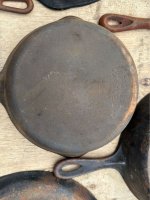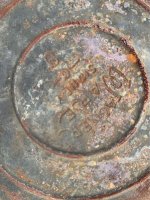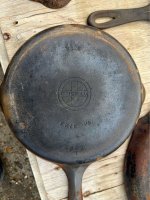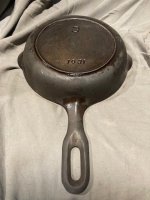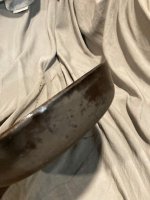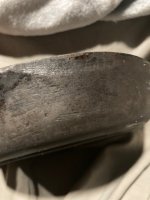Janin Hendry
Member
for those that do not read intros, I am Janin Hendry. Winner of some cast iron at an auction. Below is what I won. and I am going to post piece-by-piece the restoration of each. It will take a while. I work and am very busy around this. I do love cast iron though, so to do each piece justice I want to take the time to clean them right. I am starting with the more simple pieces first as while I know electrolysis is the ultimate way to clean difficult pieces, I have weird space to work with and spoken for funds for set up.
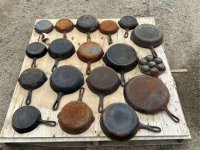
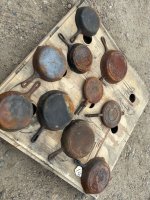
Here is the first piece I have touched: The first two pictures are it stripped in a lye-vinegar bath and the second two are it cleaned and seasoned.
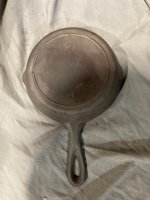
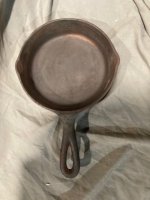
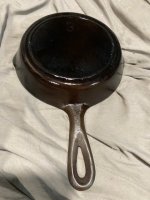
Identifying marks include the raised outer edge on the bottom, the size of "3", which from reading on this forum fits the correct slot in antique stoves and a Y Followed by what I think is a decimal point of sorts, which can indicate the the mold used. There is also an 11, under the Y which I don't really understand. Anything else anyone sees? Any guesses about any of it?


Here is the first piece I have touched: The first two pictures are it stripped in a lye-vinegar bath and the second two are it cleaned and seasoned.



Identifying marks include the raised outer edge on the bottom, the size of "3", which from reading on this forum fits the correct slot in antique stoves and a Y Followed by what I think is a decimal point of sorts, which can indicate the the mold used. There is also an 11, under the Y which I don't really understand. Anything else anyone sees? Any guesses about any of it?

